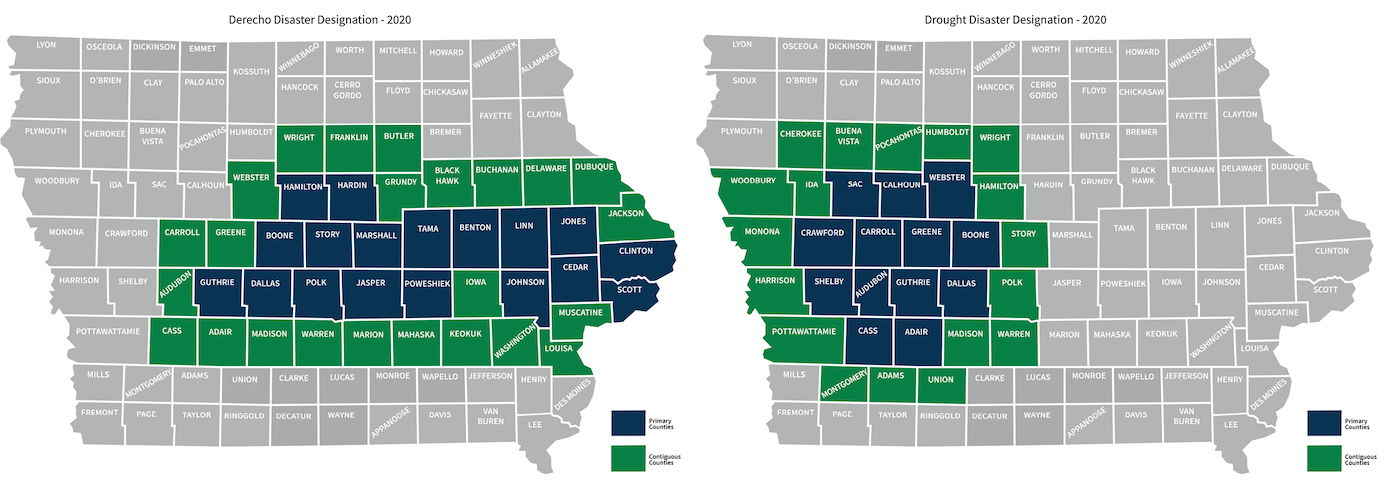Naig: USDA Secretarial Derecho Disaster Declaration Helps Farmers on the Road to Recovery
DES MOINES, Iowa (Sept. 3, 2020) – Today, Iowa Secretary of Agriculture Mike Naig thanked U.S. Secretary of Agriculture Sonny Perdue for traveling to Iowa to see firsthand the damage caused by the hurricane-like derecho last month and the ongoing severe drought. During Secretary Perdue’s visit, he announced 18 Iowa counties hardest hit by the derecho will be designated primary natural disaster areas.
“These widespread weather impacts have caused our producers and their communities to experience unprecedented losses,” said Secretary Naig. “We are thankful for the USDA’s partnership and Secretary Perdue’s disaster designation which gives our producers access to federal loan and recovery resources.”
“Most Iowa farmers have multi-peril crop insurance coverage, which will help them recover a portion of the losses to crops. Farmers have invested a significant amount of time and financial resources in this year’s crop. It will be important for USDA and crop insurance providers to continue working with Iowa farmers as they assess the damage to their crops and potential harvest and grain quality implications.”
Today’s Secretarial Derecho Disaster Declaration lists Benton, Boone, Cedar, Clinton, Dallas, Guthrie, Hamilton, Hardin, Jasper, Johnson, Jones, Linn, Marshall, Polk, Poweshiek, Scott, Story and Tama as primary disaster areas. Twenty-four contiguous counties are also eligible for disaster relief programs including Adair, Audubon, Black Hawk, Buchanan, Butler, Carroll, Cass, Delaware, Dubuque, Franklin, Greene, Grundy, Iowa, Jackson, Keokuk, Louisa, Madison, Mahaska, Marion, Muscatine, Warren, Washington, Webster and Wright.
This Secretarial Derecho Disaster Declaration is in addition to the Secretarial Drought Disaster Declaration that was announced in August.
The Secretarial Disaster Declaration makes farm operators in primary and contiguous counties eligible for assistance programs provided by the Farm Service Agency (FSA). Farmers and landowners can learn more about the USDA disaster assistance programs, by visiting farmers.gov/recover or contacting their local USDA Service Center.
